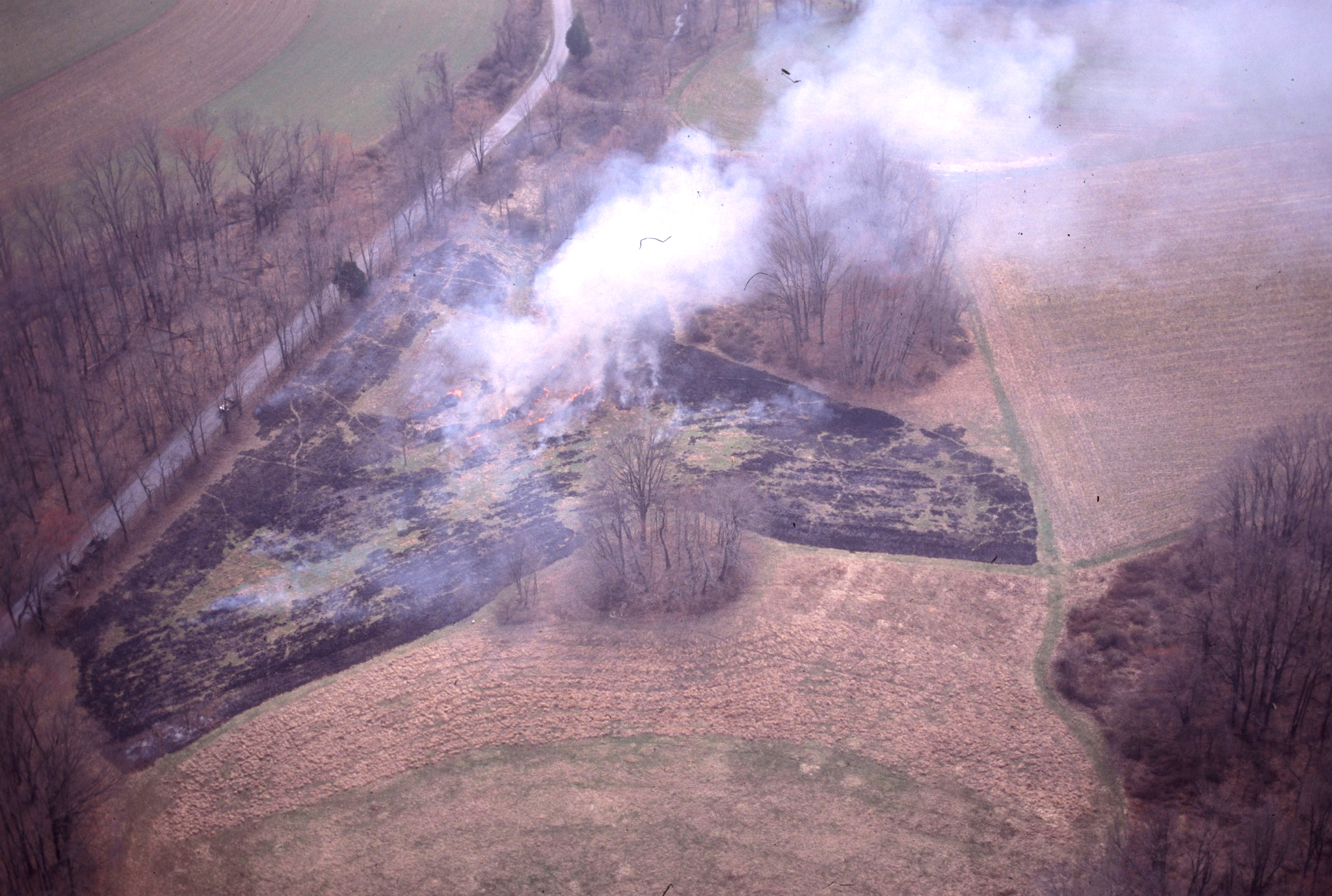Crow’s Nest: Patchiness, or why I think structural diversity is important in habitat management
By Daniel Barringer, Preserve Manager. Aerial photo by Steve Eisenhauer.
When we burn a meadow to manage habitat for grassland species, we don’t expect the area to be uniformly blackened. Our burn boss Darin Groff doesn’t even want us to burn all of every meadow in any one given year—he doesn’t want all of the habitat eliminated (even temporarily) at one time, even if that habitat depends on fire.

In this aerial photo of the meadow below our Chief’s Grove being burned, patchiness is obvious that was not visible from the ground. This was the first time this field was burned (1999), and it was especially patchy. In later burns (we burn most of these meadows on a five-year cycle, mowing them in the years in between) the fire was more thorough, but there are always some spots that don’t burn.
Similarly, when we mow meadows, Director of Land Stewardship Gary Gimbert wants us to leave small areas uncut, so that there are islands of habitat left. The exact location of these unmowed patches is somewhat arbitrary and unlikely to be the same place year after year, so overall, the meadow remains a meadow—but not entirely uniform.
Uniformity in completing the job may feel satisfying—a job thoroughly done—but it’s not how nature works, and if we’re trying to emulate natural processes in how we manage habitat then our work may look patchy too. I should add that skipping mowing in these spots doesn’t actually save time—it really takes just as long as mowing everything.

Here are some of these patches left in the field I mowed recently above the Chief’s Grove. One patch I choose not to mow is a wet spot—even when the ground is otherwise frozen there are seeps where groundwater comes to the surface where it never freezes. How do I see the wet spots before I’m driving through them? I look for wetland-obligate species. Rushes grow in this spot, but they sometimes are difficult to see under other vegetation. Another wetlands plant that stands out better is seedbox, Ludwigia alternifolia. It’s an attractive plant known best for the box-shaped seed pods in winter.

Ludwigia alternifolia, seedbox
Other patches I choose to leave because they have noticeable desirable plants, or at least a lack of undesirable ones. It’s a reasonable bet that a patch of multiflora rose is not going to be left as a habitat area—where we decide to mow is also one of the ways we encourage desirable plants and discourage undesirable ones.
While we normally manage the largest contiguous habitat we can protect, there is usually variation within a natural habitat. Larger forests are better at protecting neotropical songbirds than small woodlots. Larger meadows are better than small ones at protecting ground-nesting grasslands species of birds. (Both of these groups of birds are ones that are in decline, and benefit from habitat protection and management in our region.) But that forest offers the most habitat value for the greatest number of species as an uneven-aged stand of trees of many different species, and our grasslands offer great habitat when there are patches of last-year’s stems, occasional brushy areas, and a wide variety of plant species to provide habitat and food to pollinators and other insects and all the species that depend on them.
